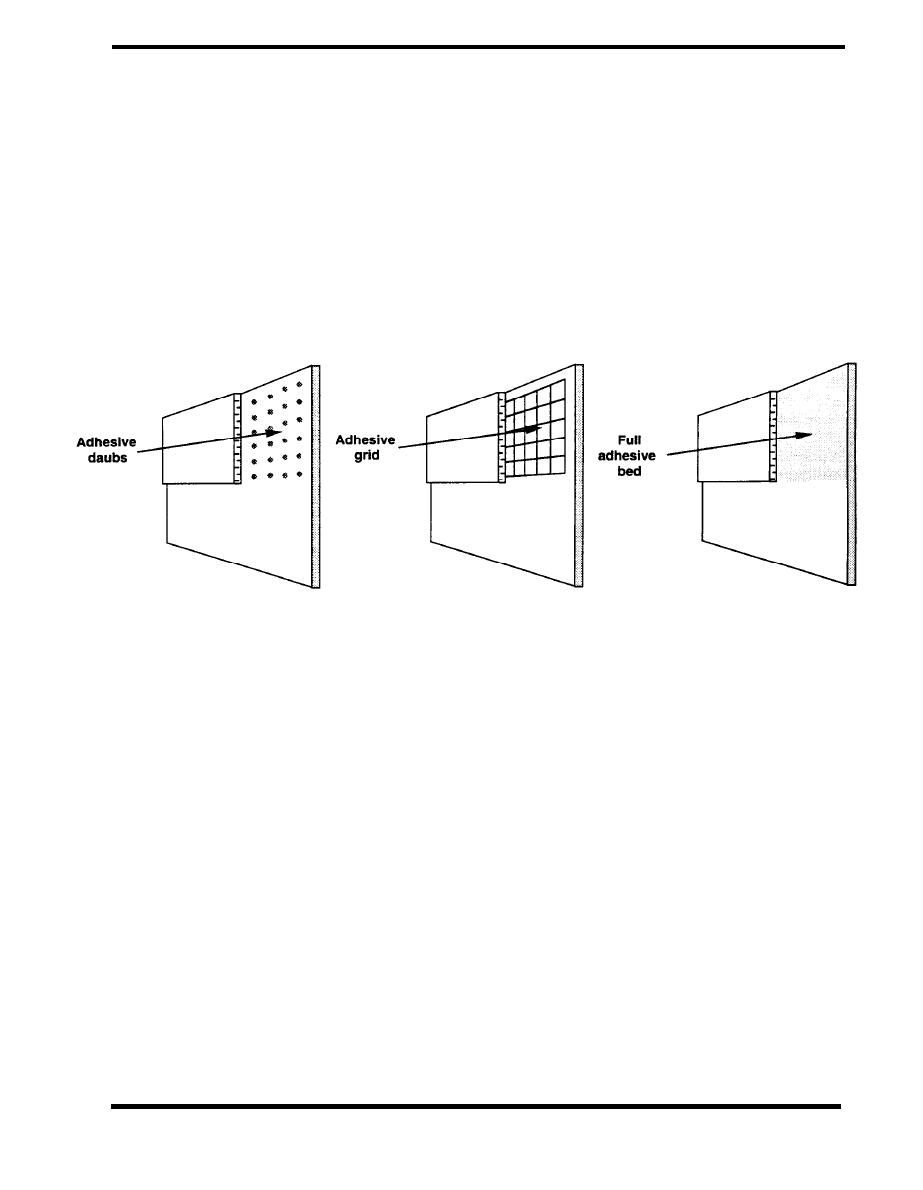
SYSTEMS/PRECAST
Rigid insulation can be installed on the back of precast panels using adhesives or a variety of
mechanical attachment systems. If an adhesive is used, it must be compatible with the insulation
material. The adhesive should not be applied in daubs as shown in Figure 4.4.7, from Architectural
Precast Concrete (PCI). Using daubs of adhesive creates air gaps behind the insulation, which in
turn lead to airflow behind and around the insulation. Besides decreasing the thermal effectiveness
of the insulation, such airflows can also lead to condensation on the back of the panel. A grid of
adhesive beads is an improved method of application, while a full bed of adhesive provides the best
performance. A full bed will act as a vapor retarder, and its water vapor permeance must be
analyzed with reference to the entire wall system. If a vapor retarder is unacceptable at this
location, a grid of adhesive may be used instead.
BETTER METHOD
RECOMMENDED
NOT RECOMMENDED
Figure 4.4.7 Application of Rigid Insulation with Adhesives (PCI)
A variety of mechanical means exist for attaching insulation onto panels including stick clips and
furring systems. In all cases, it is important that the insulation is attached tightly to the precast
concrete with no air spaces between the two elements. Such air spaces will decrease the
insulation performance. Rigid fibrous insulation boards have been recommended because they are
sufficiently flexible to conform to irregularities in precast panel surfaces.
Precast concrete sandwich panels incorporate the thermal insulation within the concrete panel,
between two wythes of concrete. The interior finish system can also be incorporated directly onto
the factory-made panel. As discussed in Architectural Precast Concrete (PCI) and in Sauter, this
approach can improve the thermal performance of the wall by enabling good insulation system
continuity. In order to achieve this continuity in a sandwich panel, the use of concrete webbing and
framing within the panel must be reduced. Further improvements can be obtained by using
nonconductive ties between the two wythes of concrete, e.g. composite materials. The references
contain a great deal of information on sandwich panel walls, including their attachment and the
design of ties. The performance of the whole wall system is determined in large part by the design
and performance of the panel joints in terms of water and airtightness. These joints must be
designed in conjunction with the panels and the air barrier system. Sauter contains a series of
precast sandwich panel details that show how insulation system continuity is maintained with this
system. However, these details do not explicitly address air leakage control.
PAGE 4.4-7



 Previous Page
Previous Page
